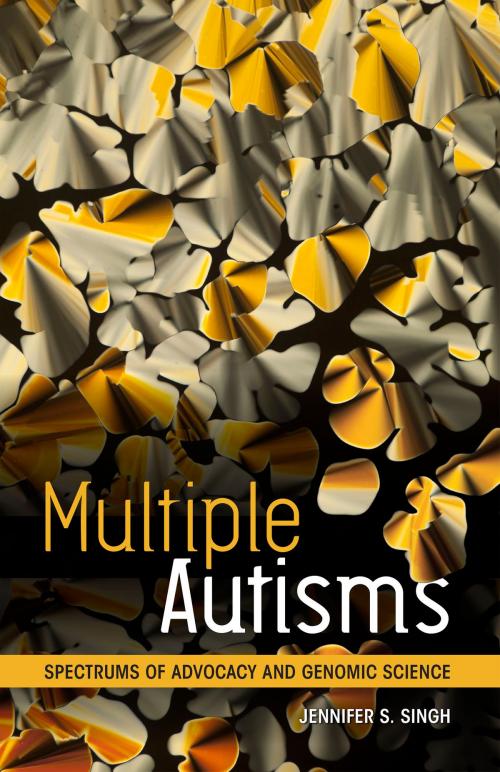Multiple Autisms
Spectrums of Advocacy and Genomic Science
Nonfiction, Social & Cultural Studies, Social Science, Disability, Health & Well Being, Medical, Reference, History, Psychology, Mental Health| Author: | Jennifer S. Singh | ISBN: | 9781452949826 |
| Publisher: | University of Minnesota Press | Publication: | December 1, 2015 |
| Imprint: | Univ Of Minnesota Press | Language: | English |
| Author: | Jennifer S. Singh |
| ISBN: | 9781452949826 |
| Publisher: | University of Minnesota Press |
| Publication: | December 1, 2015 |
| Imprint: | Univ Of Minnesota Press |
| Language: | English |
Is there a gene for autism? Despite a billion-dollar, twenty-year effort to find out—and the more elusive the answer, the greater the search seems to become—no single autism gene has been identified. In Multiple Autisms, Jennifer S. Singh sets out to discover how autism emerged as a genetic disorder and how this affects those who study autism and those who live with it. This is the first sustained analysis of the practices, politics, and meaning of autism genetics from a scientific, cultural, and social perspective.
In 2004, when Singh began her research, the prevalence of autism was reported as 1 in 150 children. Ten years later, the number had jumped to 1 in 100, with the disorder five times more common in boys than in girls. Meanwhile the diagnosis changed to “autistic spectrum disorders,” and investigations began to focus more on genomics than genetics, less on single genes than on hundreds of interacting genes. Multiple Autisms charts this shift and its consequences through nine years of ethnographic observations, analysis of scientific and related literatures, and morethan seventy interviews with autism scientists, parents of children with autism, and people on the autism spectrum. The book maps out the social history of parental activism in autism genetics, the scientific optimism about finding a gene for autism and the subsequent failure, and the cost in personal and social terms of viewing and translating autism through a genomic lens.
How is genetic information useful to people living with autism? By considering this question alongside the scientific and social issues that autism research raises, Singh’s work shows us the true reach and implications of a genomic gaze.
Is there a gene for autism? Despite a billion-dollar, twenty-year effort to find out—and the more elusive the answer, the greater the search seems to become—no single autism gene has been identified. In Multiple Autisms, Jennifer S. Singh sets out to discover how autism emerged as a genetic disorder and how this affects those who study autism and those who live with it. This is the first sustained analysis of the practices, politics, and meaning of autism genetics from a scientific, cultural, and social perspective.
In 2004, when Singh began her research, the prevalence of autism was reported as 1 in 150 children. Ten years later, the number had jumped to 1 in 100, with the disorder five times more common in boys than in girls. Meanwhile the diagnosis changed to “autistic spectrum disorders,” and investigations began to focus more on genomics than genetics, less on single genes than on hundreds of interacting genes. Multiple Autisms charts this shift and its consequences through nine years of ethnographic observations, analysis of scientific and related literatures, and morethan seventy interviews with autism scientists, parents of children with autism, and people on the autism spectrum. The book maps out the social history of parental activism in autism genetics, the scientific optimism about finding a gene for autism and the subsequent failure, and the cost in personal and social terms of viewing and translating autism through a genomic lens.
How is genetic information useful to people living with autism? By considering this question alongside the scientific and social issues that autism research raises, Singh’s work shows us the true reach and implications of a genomic gaze.















